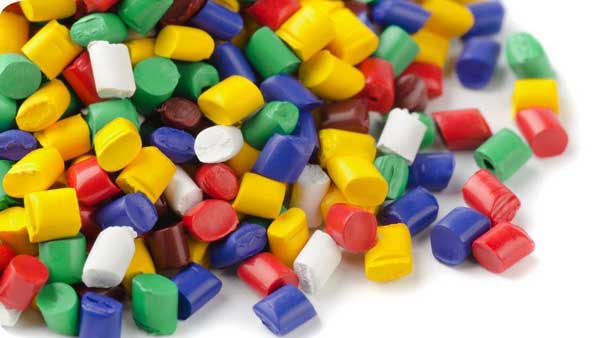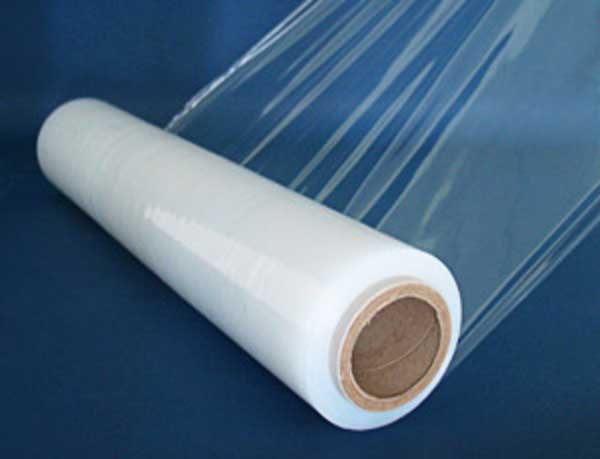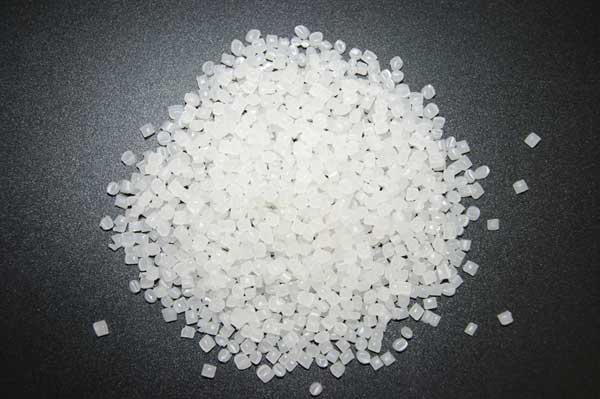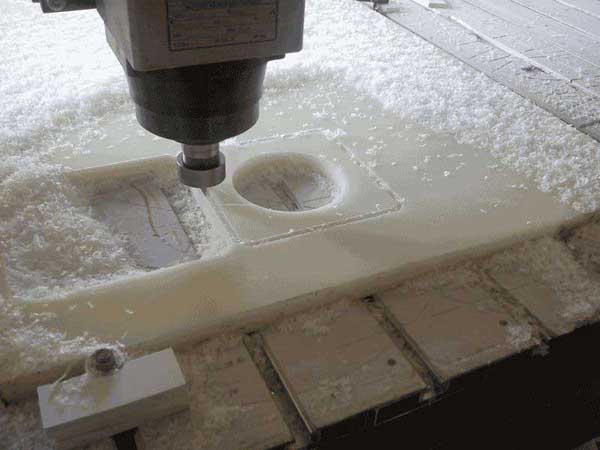More about the most common thermoplastic polymers
A thermoplastic polymer is a material that can become softer when heated repeatedly and regain its hardness when cooled. The properties of these substances can be explained by the linear structure of their macromolecules. When energy is transferred to them during heating, the bonds between the molecules are weakened, which provides more free movement relative to each other, while the polymer itself becomes amorphous or, with increasing temperature, passes into a liquid aggregate state. It is this property that is used when creating various kinds of products from thermoplastic polymers, or when splicing two parts by means of welding.
Features of the conversion of polymers into a viscous state
It should be noted that in practical application, not all are transferred to the liquid state of aggregation so easily. This is due to the fact that for some substances the temperature of thermal decomposition is lower than the temperature at which they acquire a liquid state of aggregation. They solve this problem by using various kinds of technological methods that reduce the viscosity temperature threshold (by adding plasticizers), or vice versa, by increasing the temperature of thermal destruction (by adding special stabilizers or processing raw materials in an inert gas environment).
Due to the linear type of structure of the molecule, the thermoplastic is characterized by the property of swelling; this also allows them to easily dissolve in a suitable solvent (which must be selected depending on the chemical composition of the polymer). Moreover, any solution containing already 2 percent of such substances is characterized by increased viscosity. The reason for this property is the large polymer molecules when compared with ordinary substances.
If the solvent evaporates, the polymer returns to its original state and becomes solid. It is in this way that various adhesives, binding components of mastics, many types of paints created using thermoplastic polymers are used.
The main disadvantages of this group of polymers are:
- low heat resistance (within 85-125 degrees Celsius);
- increased fragility with decreasing temperature;
- increased fluidity at high temperatures;
- ages when exposed to ultraviolet radiation;
- oxidizes when exposed to atmospheric oxygen;
- has a reduced surface hardness.
The most popular in construction industries and in everyday life are the following thermoplastics:
- polyethylene;
- polypropylene;
- polystyrene.
There are many other thermoplastic polymers, but most of them are derived from these three and are used much less frequently.

Polyethylene
Polyethylene is a substance that is created due to the chemical reaction of ethylene polymerization, mostly by processing oil gases at high temperatures or by hydrolysis of oil products. One of the prerequisites for such reactions is high pressure, a certain temperature, the presence of catalysts and the presence of oxygen. On an industrial scale, the process takes place in tubular reactors, which are the most complex equipment.
High-pressure polyethylene is a chemical-resistant product with a density in the region of 0.950 g per cm3. It differs from other polymer compounds in high elasticity (this property is provided by 45 percent of the amorphous phase). Polyethylene is produced in the form of granules, which are heated and deformed at specialized enterprises for the production of polymer products so that they acquire the necessary shapes.
Polyethylene, created at low pressure and temperatures not exceeding 80 degrees Celsius, is called. It is produced using a solvent (most often gasoline) and certain catalysts. The properties of this polymer are different from high pressure polyethylene, it is more fragile and more susceptible to aging.
To a greater extent, the physical and mechanical properties of polyethylene depend on the degree of its polymerization, in other words, on the weight of one molecule, therefore, the characteristics may differ. Thus, the tensile strength of the material, depending on the degree of polymerization, can vary within the range of 18-46 MPa, its density is within the range of 920-960 kg / m3, and the spread of the melting temperature is within the range of 110-125 degrees Celsius.
If for a long time the polyethylene is exposed to half of the maximum load that it can withstand, the polymer will gradually become more fluid. The lower threshold for maintaining elasticity is 70 degrees Celsius below zero. The material itself is not only easy enough to weld due to low melting temperatures, but also easy to process into other products. One of the main disadvantages is the low heat resistance and hardness of polyethylene, as well as increased flammability and high aging rate under ultraviolet light.
We learned to deal with some of the negative characteristics of polyethylene. Various stabilizers are used to increase the polymer's resistance to oxidation and subsequent atmospheric exposure. For example, if you introduce 2 percent carbon black into polyethylene, its overall life in the open air will increase 30 times.
Many different products are made from polyethylene, ranging from films and pipes to electrical insulation. Foamed polyethylene, produced in sheet form, has proven itself well as a soundproofing and heat-insulating material.

Polypropylene
Another well-known thermoplastic is that created by polymerizing the corresponding gas with the help of solvents. During synthesis, polypropylene is capable of forming several polymers differing in structural formulas at once: isotactic, atactic, and also syndiotactic. Tacticity is the method of setting side groups relative to the main ones in the molecular chains of a polymer material. Most often, you can find isotactic polypropylene compounds, in which each methyl group is located on one side of the macromolecule.
One of the main differences from polyethylene is increased hardness and strength, as well as a higher softening point, reaching 170 degrees Celsius. However, this material is less resistant to negative temperatures, and becomes brittle already at 20 degrees Celsius below zero. Its density is practically the same as for polyethylene - 930 kg / m3, and its tensile strength reaches 30 MPa. Polypropylene is used in the same place as polyethylene, but products made from this polymer are distinguished by their stable shape and high rigidity.
Atactic polypropylene is a subtype of this material, in which each methyl group is located randomly on both sides of the chain of a common molecule. During the synthesis, propylene is an unavoidable impurity, but it can be easily separated by extraction. APP is a softer and less dense product, the melting point of which is in the range of 30-80 degrees, which allows it to be melted literally in the human hand. It was used as a modifier of a bitumen composition when creating a roofing material.
Syndiotactic polypropylene is produced using special metallocene catalysts. It is a polymer in which the methyl groups, as in the DLC, are located on both sides of the main chain, but they do this in a more orderly manner. Most of the physical properties of this polymer are similar to rubber, which is why it is often used as an elastomer.

Polystyrene
It is a thermoplastic polymer with a transparent surface and a fairly high rigidity, its density reaches 1080 kg / m3. At normal temperatures, this material is quite hard and brittle at the same time; it begins to soften at temperatures above 80 degrees Celsius. Let's dissolve polystyrene using aromatic hydrocarbons or using esters. Also, this material, in addition to increased fragility, also has increased flammability. It is protected from the corrosive effects of alkalis and sulfuric acids, which allows it to be used in many industrial sectors, is lightfast and transparent.
Polystyrene is obtained from styrene (a transparent, highly flammable liquid mixture, which is produced in the process of hydrolysis of petroleum products, which is quite simply polymerized by the action of sunlight and heating). It is produced like other polymers in the form of granules or white powder, which are processed in production into the necessary products.
Polystyrene is actively used in construction, its foamed form is used as an insulating material - expanded polystyrene, the density of which varies within 10-50 kg / m3, which allows transportation and installation of panels without much physical effort. Also, facing tiles and various small accessories are made from this polystyrene. Using it together with organic solvents, you can get a high-quality adhesive.








